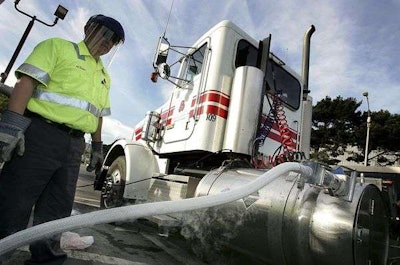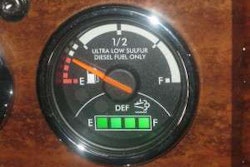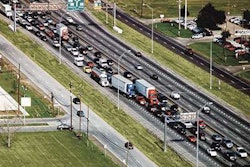
A panel of leaders in the natural gas industry addressed attendees on the viability of alternative-fuel vehicles in the trucking industry during a session at the Great West Fleet Executive Conference.
Tim Carmichael, president of the California Natural Gas Vehicle Coalition, said two key factors over the next year and a half will help drive acceptance of natural gas vehicles in the commercial market. First, Carmichael said, is the infrastructure buildout of fueling stations to support fleets using natural gas in their operations. “With the Natural Gas Highway and Shell’s announcement of 100 fueling stations, we’re going to go from a handful of fueling stations to a couple hundred in the next 18 months,” he said. “I do believe this buildout is going to happen that quickly. There is a lot of money behind these efforts, and I think there is a high chance of implementation.”
Secondly, Carmichael said the 12- and 13-liter natural gas engine offerings coming in the near term with high horsepower will satisfy the need of many fleets. “This is a huge game-changer,” he said. “You’ll address one of the biggest challenges that fleets have put out there as to why they aren’t going to natural gas with bigger orders already.”
Carmichael said challenges to natural gas adoption are the higher upfront prices of the engines, which can be as much as $50,000 to $60,000 higher than diesels, and only a handful of incentives in existence to support fleets looking to adopt new technology.
Erik Neandross, chief executive officer of Gladstein, Neandross & Associates, shared Carmichael’s optimism for the future of alternative fuels in the trucking industry. “I truly believe the natural gas revolution is under way,” he said. “You don’t need grants and incentives in the right operation profile.”
As to the significant price difference in engine technologies, Neandross believes the cost gap will lessen over time. “If you look at the refuse truck market in the 2000s, the incremental cost on a natural gas refuse truck was about $65,000,” he said. “Today, it’s less than $30,000. As the market grows, there is more competition and more technology advancement. I fully expect the same thing to happen on the over-the-road side.”
Neandross stressed it is critical to figure out how to put natural gas into your operation. “Natural gas has to be the right fit for the application, or it won’t work,” he said, saying midsize and larger fleets with vehicles using 8,000 gallons per year have the right profile. Carmichael suggested that fleets looking to convert at least 10 trucks that burn 1,000 gallons of fuel per day will cover the upfront costs and get the investment back through natural gas savings at the pump.














